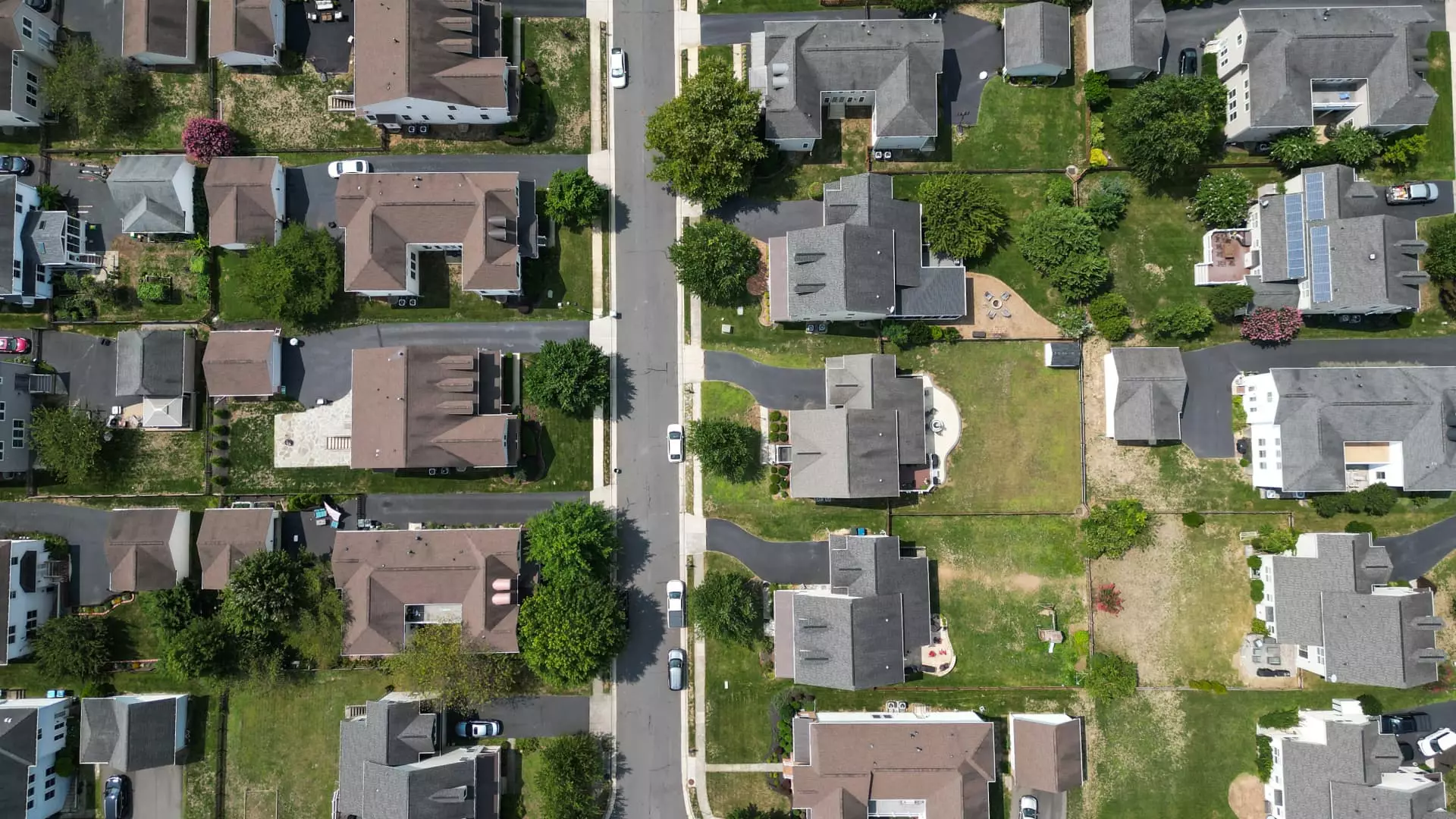Recent data indicates that mortgage rates have crept up to their highest point in four weeks. While this increase might seem minor—a mere 0.02 percentage points—the implications are far more profound. The mortgage market, often considered a barometer of economic health, reveals a pattern of hesitation and uncertainty. Total mortgage applications only saw a marginal bump of 0.8%, suggesting that potential homebuyers and refinancing borrowers are responding to the persistent, yet seemingly manageable, rate hikes with caution rather than enthusiasm. This tepid response underscores a fragile confidence in the housing market, one that balances on the precipice of economic shifts and policy unpredictability.
Despite the rising costs, demand for new mortgaging remains relatively steady, but not without signs of strain. The slight increase in purchase applications—just 3% for the week—should not obscure the overall picture: many are holding back, wary of locking in higher rates amid ongoing inflation fears and economic policy oscillations. This cautious behavior indicates an underlying nervousness that could easily escalate if rates continue to climb or if broader economic uncertainties deepen.
Refinancing Turmoil in an Unsteady Economy
The decline in refinance applications—down 3% for the week—exposes a critical truth: homeowners recognize that the window for advantageous refinancing is closing. When interest rates soared just a few months ago, many anticipated a lowering trend; instead, rates have remained stubbornly high, making refinancing less attractive. Although the year-over-year figure shows a robust 22% increase, this is misleading because the absolute volume is relatively small. Small numbers, often misunderstood, can distort perceptions of vitality in the housing sector, but they shine a light on a deeper issue—borrowers are increasingly discouraged from restructuring their mortgages unless absolutely necessary.
Joel Kan’s commentary offers some insight, noting that the average purchase loan amount has declined significantly—dropping from $460,000 to $426,700—since March. This decline signals not just rising rates, but a shrinking affordability margin for many prospective homeowners. The high costs, coupled with economic volatility, mean that a significant portion of the market remains frozen, waiting for a more stable environment. The spike in bond yields last week, driven by geopolitical uncertainties and the Federal Reserve’s ambiguous signals, further compounded this sense of instability.
The Illusion of Market Stability Amid Political Uncertainty
Market optimism, as observed in early weekly movements and reactions to Treasury Secretary Scott Bessent’s comments, is largely superficial. The slight dip in mortgage rates earlier this week, fueled by positive market sentiment, masks a deeper undercurrent of instability rooted in federal policy and global economic tensions. The Federal Reserve’s cautious approach, combined with the ever-present threat of political upheaval—specifically debates around leadership and policy direction—serves as a reminder that what appears to be a steady recovery is, in reality, a fragile veneer.
This ongoing uncertainty isn’t just an abstract concern; it has tangible consequences for Americans trying to build stability through homeownership. The current environment discourages new homebuyers and strains existing homeowners still grappling with elevated rates. The semblance of a resilient market belies a complex reality—one where economic signals are muddled, and long-term prospects remain uncertain. The hope that the market can quickly adjust or stabilize under current conditions seems naive, when in truth, the core issues require more than superficial rate drops or temporary optimism to resolve.

